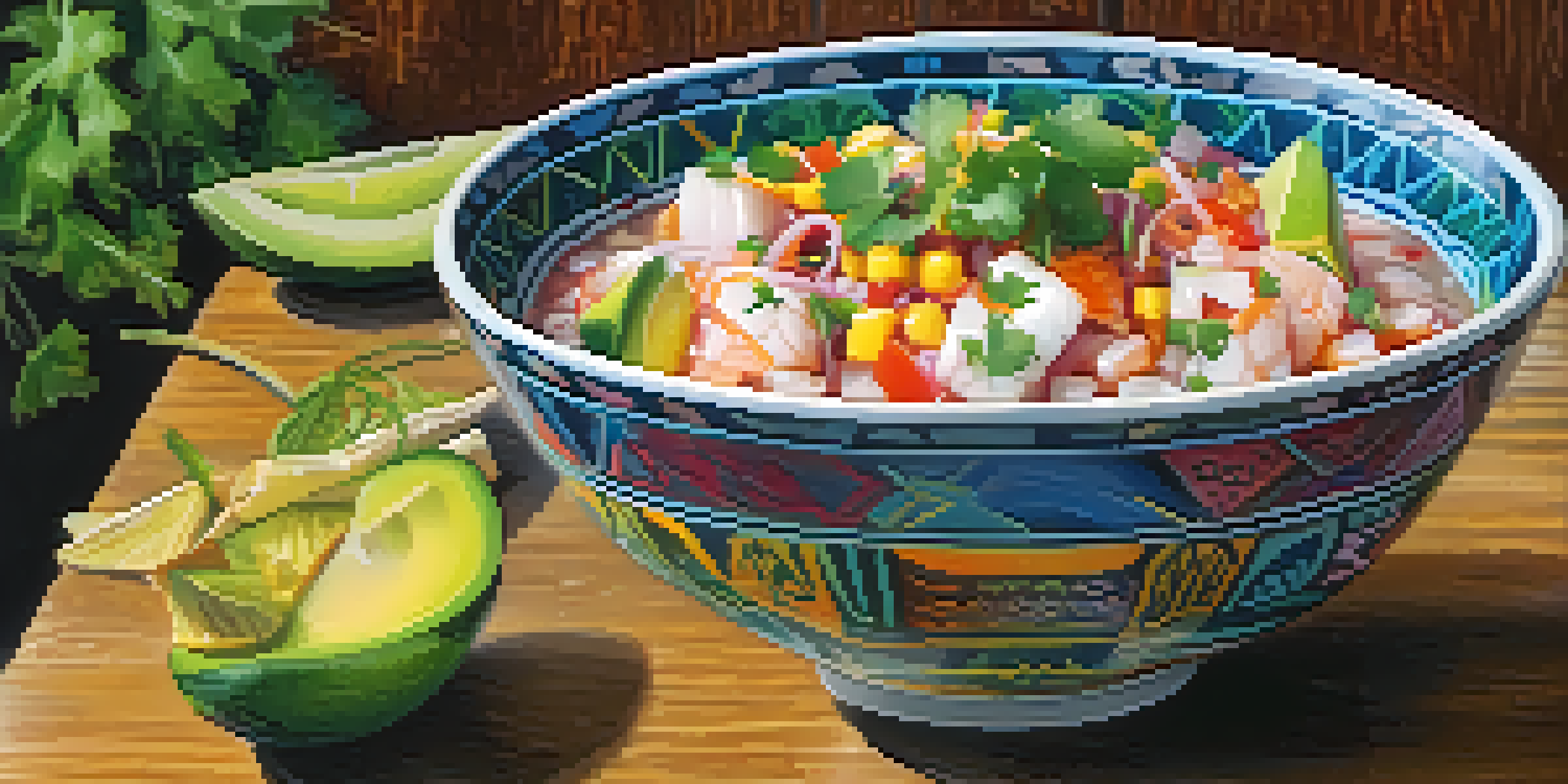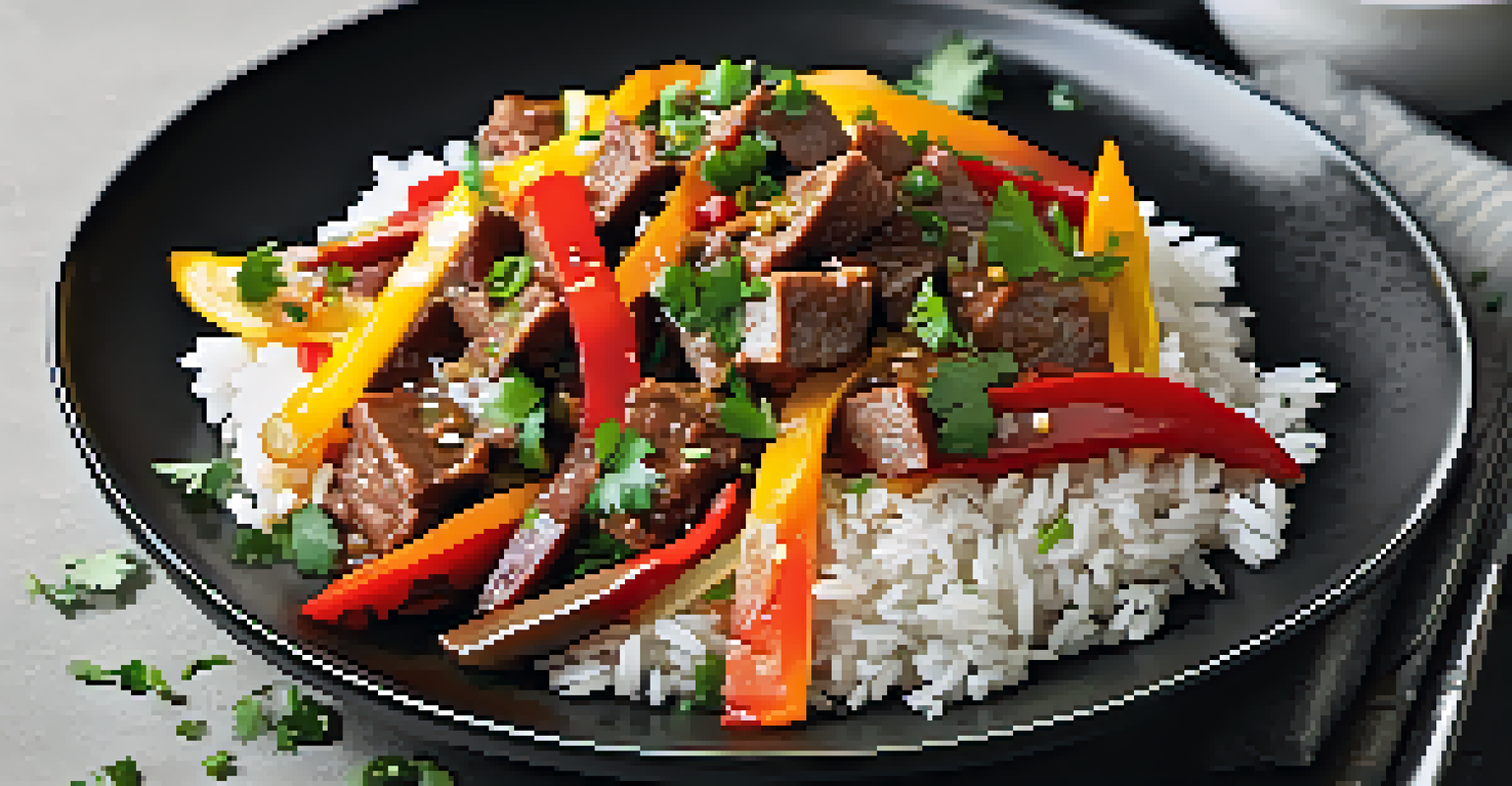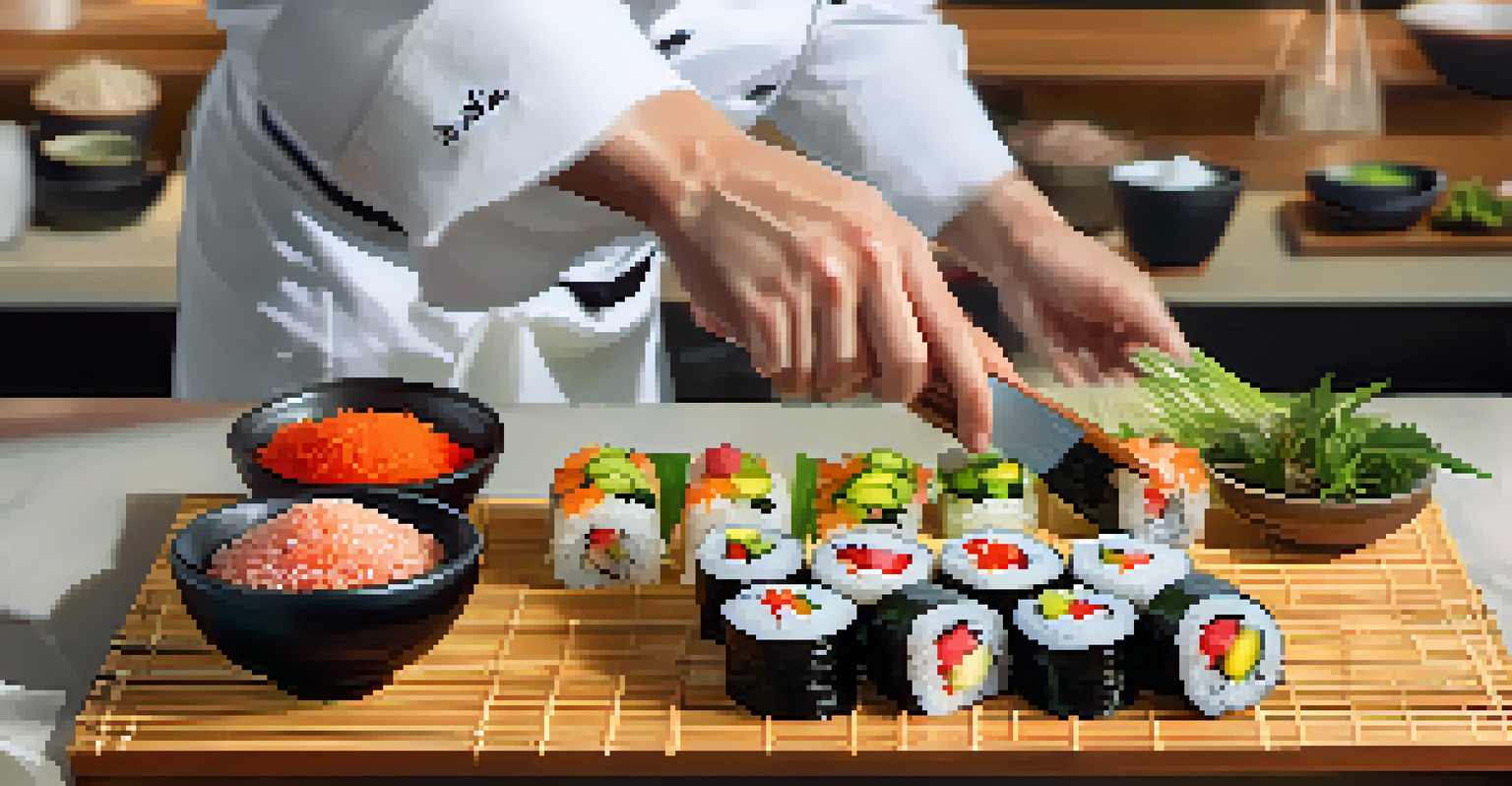The Influence of Asian Flavors in Peruvian Fusion Cuisine

The Roots of Peruvian Cuisine: A Cultural Melting Pot
Peruvian cuisine is a vibrant tapestry woven from various cultural influences, making it a true culinary melting pot. Indigenous ingredients like potatoes and corn meet Spanish colonial flavors, creating a unique base. However, the modern twist comes from Asian immigrants, particularly Chinese and Japanese, who brought their culinary traditions to Peru in the late 19th century.
Food is symbolic of love when words are inadequate.
These Asian flavors didn't just add variety; they transformed traditional dishes, infusing them with new techniques and ingredients. For instance, the Chinese method of stir-frying was adapted into Peruvian kitchens, leading to the creation of popular dishes like 'Chaufa,' a Peruvian take on fried rice. This blending of cultures highlights how food can evolve and adapt over time.
Today, this rich history of fusion continues to inspire chefs and home cooks alike, as they explore the delicious possibilities that arise when different culinary traditions intersect.
Key Asian Ingredients in Peruvian Dishes
Asian flavors shine through in various key ingredients that have become staples in Peruvian fusion cuisine. Soy sauce, ginger, and sesame oil, for example, add depth and umami to traditional Peruvian dishes. These ingredients enhance the natural flavors of local produce and proteins, creating a harmonious blend of tastes.

In dishes such as 'Ceviche Nikkei,' a fusion of Japanese and Peruvian styles, the addition of soy sauce and wasabi elevates the classic ceviche to new heights. This innovative approach showcases how Asian ingredients can refresh and reinterpret beloved local flavors. Additionally, the use of fresh herbs like cilantro and green onions bridges the gap between these distinct culinary worlds.
Peruvian Cuisine: A Cultural Fusion
Peruvian cuisine is a vibrant blend of indigenous, Spanish, and Asian influences, creating a unique culinary experience.
By integrating these Asian ingredients, Peruvian chefs craft a unique dining experience that honors both their heritage and the influences that have shaped their cuisine.
The Role of Techniques in Fusion Cuisine
Cooking techniques play a crucial role in the success of Peruvian fusion cuisine, particularly those borrowed from Asian culinary practices. Techniques such as stir-frying and steaming have been seamlessly integrated into traditional Peruvian cooking. These methods not only enhance the texture of dishes but also preserve the vibrant colors and nutrients of the ingredients.
Cooking is at once child's play and adult joy. And cooking done with care is an act of love.
For example, the preparation of 'Lomo Saltado,' a popular Peruvian dish, showcases the influence of stir-frying. The quick cooking process ensures that the beef remains tender while vegetables retain their crispness. This technique not only introduces speed to the cooking process but also emphasizes the importance of fresh ingredients.
Through the mastery of these techniques, chefs can create dishes that are not only delicious but also visually appealing, enticing diners to explore the delightful world of Peruvian fusion cuisine.
Popular Dishes Celebrating Asian-Peruvian Fusion
When it comes to popularizing Asian-Peruvian fusion, certain dishes stand out as fan favorites. 'Causa Limeña,' a traditional Peruvian dish, has been reinvented with Asian flavors by incorporating ingredients like avocado and pickled vegetables. This refreshing twist highlights how versatile and adaptable Peruvian cuisine can be.
Another standout is 'Tiradito,' which is often compared to sashimi. Chefs have embraced sashimi-style preparations, serving raw fish with a variety of sauces that include miso and ponzu. This innovative approach not only pays homage to Japanese culinary techniques but also allows for the expression of creativity and flavor in each dish.
Key Ingredients Enhance Flavor
Asian ingredients like soy sauce and ginger elevate traditional Peruvian dishes, showcasing the harmonious blend of flavors.
These examples illustrate the beauty of fusion cuisine, where traditional dishes are transformed into something entirely new while still honoring their origins.
The Influence of Nikkei Cuisine
Nikkei cuisine, a term used to describe the fusion of Japanese and Peruvian culinary traditions, has gained significant popularity in recent years. This style of cooking highlights the unique melding of flavors and techniques, resulting in dishes that are both innovative and deeply rooted in history. The Nikkei movement has introduced concepts like using miso-marinated ingredients in traditional Peruvian recipes.
An excellent example of Nikkei cuisine is 'Sushi Criollo,' which combines sushi with local ingredients such as quinoa and ají peppers. This creative blend showcases how chefs are not afraid to push boundaries and explore new flavor combinations. The result is a culinary experience that is familiar yet exciting.
As Nikkei cuisine continues to evolve, it not only reflects the rich tapestry of cultural influences in Peru but also invites diners to appreciate the artistry behind each fusion dish.
Culinary Events Celebrating Fusion Flavors
Culinary events dedicated to Peruvian fusion cuisine have become increasingly popular, highlighting the dynamic blend of Asian flavors. Food festivals and pop-up restaurants often showcase dishes that exemplify this fusion, allowing chefs to experiment and share their creations with a broader audience. These events serve as a platform for culinary innovation and cultural exchange.
Attendees can enjoy tasting menus that feature a variety of Asian-Peruvian dishes, from dumplings made with local ingredients to ceviche served with a soy-based sauce. These experiences not only tantalize the taste buds but also foster appreciation for the diverse influences that shape modern Peruvian cuisine.
Nikkei Cuisine Pushes Culinary Boundaries
Nikkei cuisine exemplifies the fusion of Japanese and Peruvian traditions, resulting in innovative dishes that honor their roots.
By celebrating these culinary events, the community embraces the creativity and passion of chefs who continue to explore new horizons in flavor and technique.
The Future of Asian-Peruvian Fusion Cuisine
The future of Asian-Peruvian fusion cuisine is bright and full of potential, as chefs and food enthusiasts alike continue to experiment and innovate. With the increasing globalization of flavors, we can expect to see even more creative combinations emerge. As culinary boundaries blur, chefs are encouraged to think outside the box, fusing not only Asian and Peruvian elements but also drawing inspiration from other cuisines around the world.
This evolution means that diners will have the opportunity to experience new dishes that challenge their palates and redefine their expectations of traditional cuisine. For instance, the integration of modern techniques such as molecular gastronomy could further enhance the dining experience, offering surprising textures and flavors.

As we look ahead, the continued exploration of Asian flavors within Peruvian cuisine promises to keep the culinary landscape exciting, inviting everyone to partake in this delicious journey of fusion.